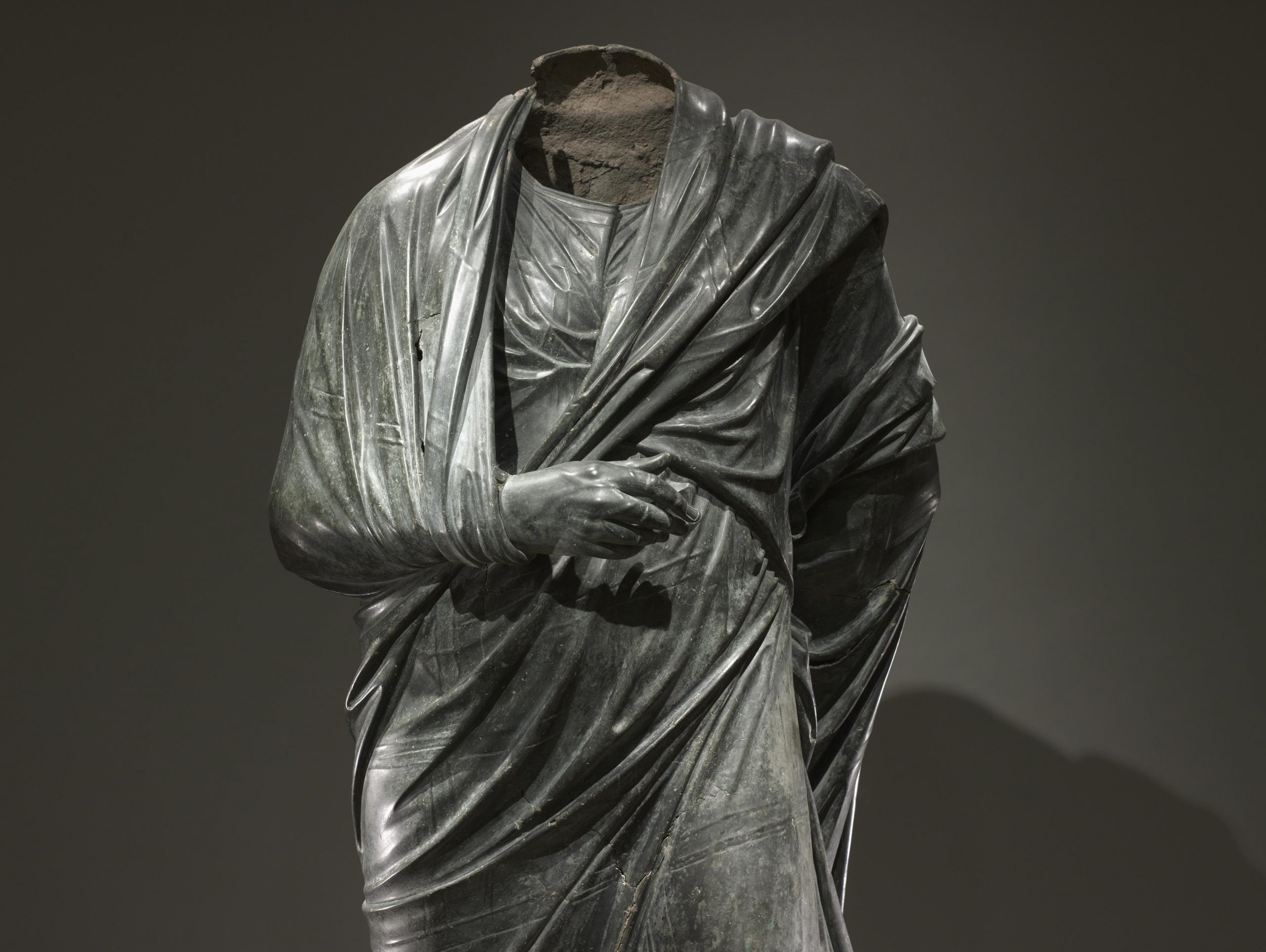An ancient bronze statue that was unearthed in the 1960s by villagers in modern-day Turkey, smuggled into the Western art market by unscrupulous Manhattan dealers, and finally ended up residing in a renowned encyclopedic museum in the far-off city of Cleveland, Ohio, will soon make the reverse journey.
The life-size headless statue, thought to represent an ancient philosopher, has had pride of place since 1986 in the Greek and Roman galleries at the Cleveland Museum of Art. Valued at $20 million, it will be repatriated to Turkey after a years-long investigation by the Antiquities Trafficking Unit (ATU) of the Manhattan District Attorney’s office that led to the artifact’s seizure and a lawsuit by the museum arguing that it was the piece’s rightful owner—a lawsuit since retracted after research revealed the piece’s true origins.
The draped figure comes from an archaeological site known as the the Sebasteion, in Bubon, in modern-day Turkey, that is thought to have been erected by local leaders as a sign of loyalty to Rome when the Empire ruled the region. It was built around 50 C.E. and may have been in use for 200 years before earthquakes turned it into rubble. The bronze statues remained untouched under the earth for two millennia, until the locals uncovered them in the 1960s.

Draped Male Figure (c. 150 B.C.E.–200 C.E.). Courtesy the Cleveland Museum of Art.
Villagers sold several objects before authorities learned of the find in 1967. The villagers worked with Switzerland-based trafficker George Zakos and trafficker Robert Hecht (known to locals, according to a report in the New York Times, only as “American Bob”), who operated in New York and Paris. According to the D.A., New York-based dealers such as Jerome Eisenberg’s Royal-Athena Galleries and the Merrin Gallery “funneled the stolen Bubon bronzes into museum exhibitions and academic publications thereby laundering the pieces with newly crafted provenance.”
The D.A.’s Office’s Antiquities has now seized 15 antiquities looted from Bubon, 14 of which have already been repatriated and are collectively valued at nearly $80 million, according to the D.A. These have been found in public and private New York collections including those of the Metropolitan Museum of Art and of Fordham University.
“I am pleased the Cleveland Museum of Art agrees that this statue belongs to the people of Türkiye,” said Manhattan District Attorney Alvin Bragg in press materials. “This investigation included extensive witness interviews and forensic testing that proved conclusively this antiquity was looted from Bubon. I appreciate the museum’s cooperation throughout this matter, which is illustrative of how we can work together to ensure that looted antiquities are in the possession of its [sic] rightful owners.”
Bragg’s office seized control of the work in August 2023. New York Judge Ruth Pickholz issued a warrant for the seizure of the artwork, created when Turkey was part of the Roman Empire’s Anatolia or Asia Minor region, as part of an “ongoing criminal investigation into a smuggling network involving antiquities looted from Turkey and trafficked through Manhattan,” the D.A.’s office’s Antiquities Trafficking Unit told the New York Times.
The Manhattan D.A. had recently made several other seizures related to Turkish looting claims, returning five antiquities from the collection of Shelby White, a trustee of New York’s Metropolitan Museum of Art, to the country in 2022. Those included a bronze statue of Lucius Verus (also a Roman emperor) from Bubon, said to be worth $15 million.
Cleveland Museum experts, collaborating with Turkish officials and the D.A.’s office, conducted research on the piece that ended up tying it to the Sebasteion. The statues stood on stone pedestals that feature mechanisms that held the figures in place; those correspond, it was found, to small holes in the statue’s feet. Experts also studied lead isotopes from a plug in the statue’s left foot and the pedestals, as well as samples of soil that were found within the statue and turned out to correspond to soil sourced from the site as well as other statues determined to have originated there.
This research also led to a change in the way the figure was identified. It was originally thought to show Emperor Marcus Aurelius, who was honored in the Sebasteion along with other rulers, but the place where it is now thought to have stood doesn’t bear an inscription identifying the sculpture that stood there.
“The museum and Turkish officials are considering a temporary display of the statue in Cleveland prior to its transfer to Türkiye, as well as other areas for cultural cooperation between Türkiye and the museum,” noted the museum in press materials.

